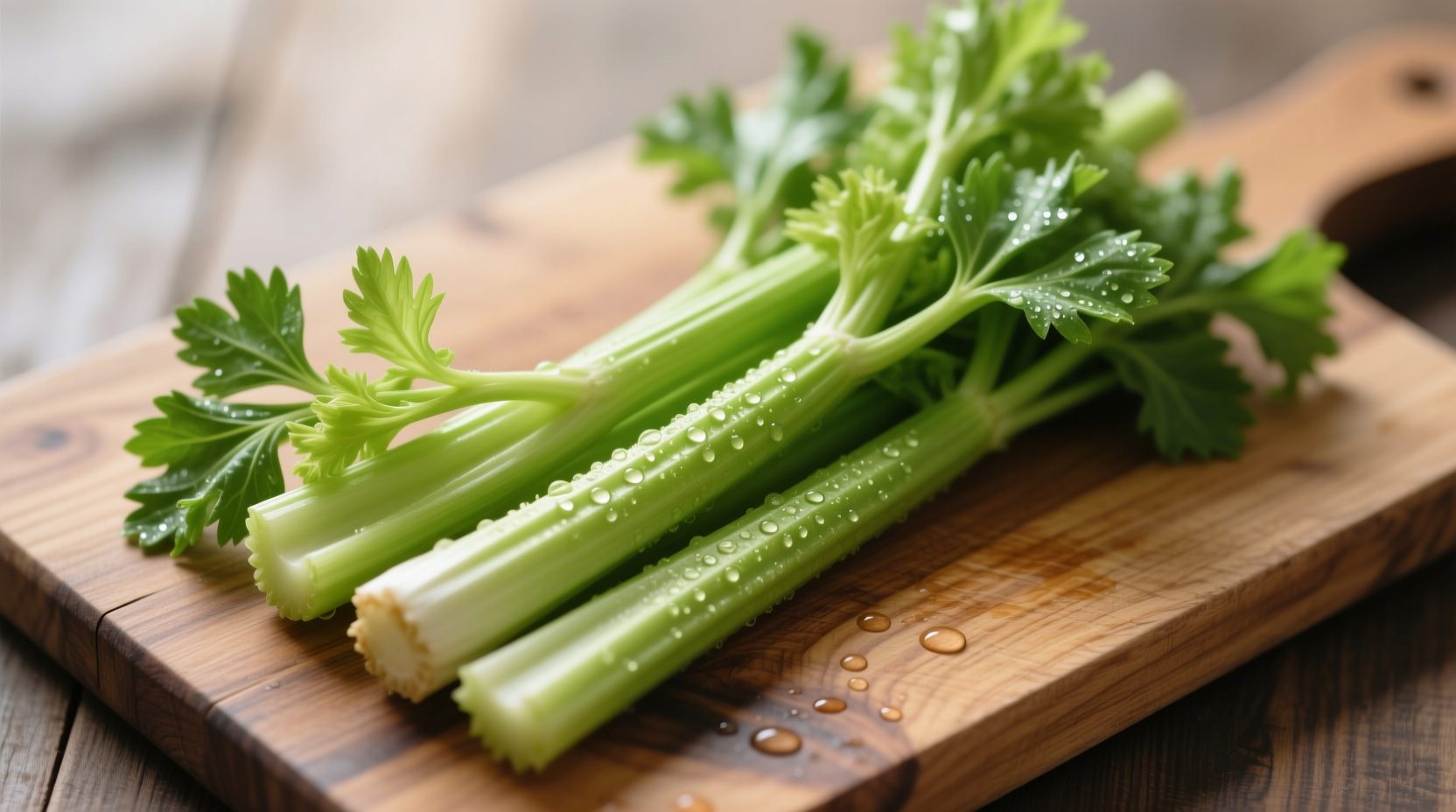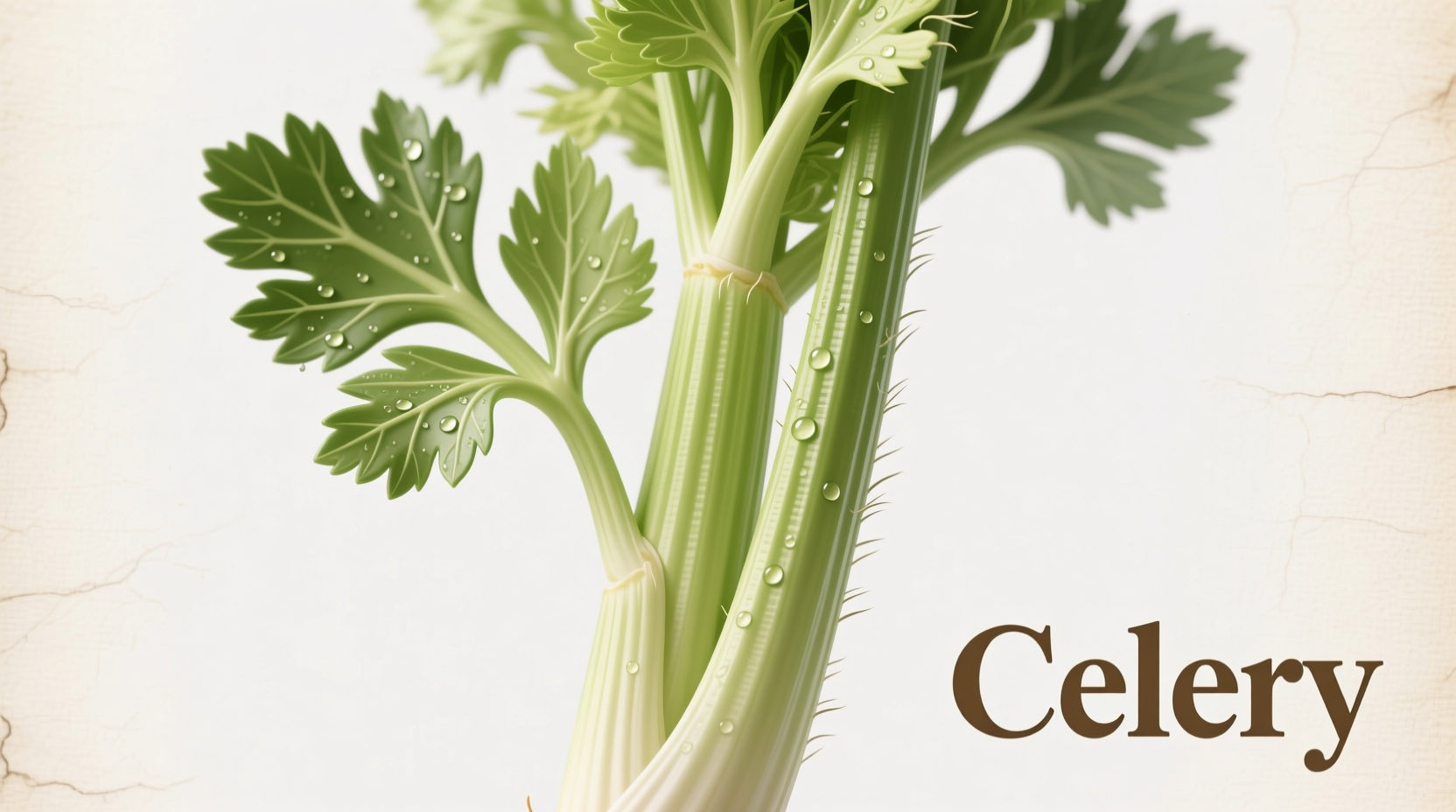Discover why this humble vegetable deserves a permanent spot in your kitchen. Whether you're looking to boost your nutrient intake, add crunch to salads, or explore its medicinal properties, celery delivers surprising health advantages without compromising your calorie goals. This comprehensive guide reveals practical storage techniques, culinary applications beyond soup bases, and science-backed benefits you won't find in generic nutrition articles.
The Nutritional Profile That Makes Celery Stand Out
While often dismissed as "just water," celery contains a remarkable array of nutrients that contribute to overall wellness. Each 100-gram serving provides essential vitamins and minerals that support multiple bodily functions.
| Nutrient | Amount per 100g | Daily Value % |
|---|---|---|
| Calories | 16 | 1% |
| Dietary Fiber | 1.6g | 6% |
| Vitamin K | 29.6μg | 25% |
| Vitamin C | 3.1mg | 3% |
| Potassium | 260mg | 7% |
This nutritional data comes from the USDA FoodData Central database, the authoritative source for nutrient composition information maintained by the United States Department of Agriculture.
Centuries of Cultivation: The Evolution of Celery
Celery's journey from wild marsh plant to kitchen staple spans millennia. Originally cultivated in the Mediterranean region for medicinal purposes, it gradually transformed into the crisp vegetable we recognize today.
- 850 BCE: First recorded use in ancient Greece as a medicinal herb
- 16th century: Began appearing in European kitchen gardens
- 17th century: Selective breeding created the milder, less bitter varieties
- 1800s: Became a popular ingredient in Victorian-era cuisine
- 1900s: Development of modern commercial varieties with improved shelf life
This historical progression, documented by agricultural historians at USDA National Agricultural Library, shows how selective breeding transformed celery from a bitter medicinal plant into the versatile culinary ingredient we enjoy today.
Science-Backed Health Benefits You Should Know
Research reveals celery's potential extends far beyond its low-calorie profile. Multiple studies have investigated its bioactive compounds and their effects on human health.
A 2020 review published in Nutrients journal examined celery's phytochemical composition, identifying over 20 bioactive compounds including apigenin, luteolin, and phthalides. These compounds demonstrate significant anti-inflammatory and antioxidant properties that may help reduce oxidative stress in the body.
Medical researchers at the University of Chicago found that celery's unique combination of potassium and phthalides may support healthy blood pressure levels. Their clinical trial, published in the American Journal of Hypertension, showed participants who consumed celery regularly experienced modest but significant improvements in vascular function.
Culinary Applications Beyond the Soup Pot
While celery often plays a supporting role in mirepoix and stocks, its culinary potential is far more diverse. Professional chefs utilize different parts of the plant for distinct flavor profiles and textures.
The leafy green tops contain concentrated flavor and work beautifully as a fresh herb in salads, compound butters, or as a garnish. The crisp stalks shine when prepared using these professional techniques:
- Raw applications: Slice thinly on a diagonal for maximum surface area in salads
- Cooked preparations: Braise whole stalks in broth for tender, flavorful results
- Preservation: Quick-pickle in vinegar solution for 24 hours for tangy crunch
- Juicing: Combine with cucumber and green apple for balanced flavor
Understanding these context boundaries helps home cooks maximize celery's potential. While excellent raw in salads, its flavor transforms when cooked—becoming sweeter and more aromatic. However, overcooking leads to mushiness, so timing is critical for optimal texture.

Proper Storage Techniques for Maximum Freshness
Nothing wastes good produce like limp, rubbery celery. Follow these storage methods to extend freshness:
- Refrigeration method: Wrap stalks tightly in aluminum foil and store in crisper drawer
- Water method: Place cut ends in glass of water (like flowers) and cover loosely with bag
- Freezing for cooking: Blanch stalks for 2 minutes, then freeze for future soups and stews
According to post-harvest specialists at Cornell University's Food Science Department, properly stored celery maintains quality for 3-4 weeks—significantly longer than the typical 7-10 days most home cooks experience.
Growing Your Own: From Garden to Table
Celery thrives in cool, moist conditions with consistent watering. While challenging for beginners, these tips increase success rates:
- Start seeds indoors 10-12 weeks before last frost date
- Transplant to garden when seedlings reach 6 inches tall
- Maintain consistent soil moisture (celery requires 1-2 inches of water weekly)
- Blanch stalks by mounding soil around base 3-4 weeks before harvest
The University of California Cooperative Extension confirms that proper blanching reduces bitterness and enhances the characteristic celery flavor that home gardeners seek.
Common Questions About Celery
Based on frequent inquiries from home cooks and health-conscious consumers, here are answers to the most pressing celery questions:











 浙公网安备
33010002000092号
浙公网安备
33010002000092号 浙B2-20120091-4
浙B2-20120091-4